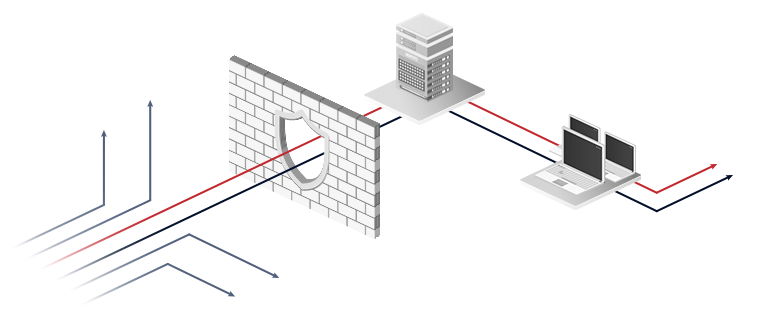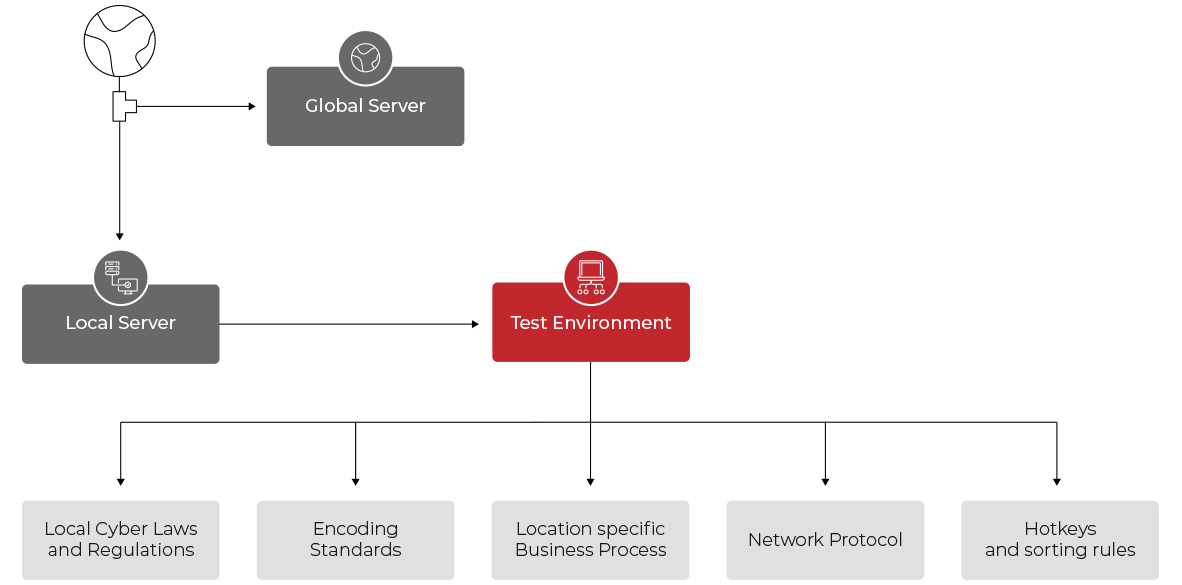What makes up the optimal eLearning solution able to deliver engaging learning experiences? Besides rich functionality like advanced course management, smooth exam taking, proctoring, etc., the system should be easy to use, robust, and secure. All these aspects are equally important and can be successfully covered with learning management system testing.
This means performing all necessary testing types at early stages of the software development cycle, while effectively managing the QA team (composition, roles, performance), leveraging the optimal tech tools, and coordinating automation efforts.
UI and functional testing
Robust user interface testing is key to checking the look and feel of your learning management system. Robust UI tests will help you make sure that all graphical objects as well as window controls — including buttons, toolbars, and menus — are correspondingly organized and labeled. With compatibility testing, you can easily optimize your solution for different web browsers, operating systems, and devices, while adapting UIs to a wide range of resolutions, screen orientations, mobile network events, etc.

UI testing
If you want to optimize your website for accessibility, giving people with poor hearing, color blindness, and other disabilities a layer of comfort, make the most of accessibility testing. It will allow you to comply with key WCAG requirements such as using the optimal combination of text color, background color, and text size, avoiding complicated copy, ensuring comprehensive keyboard navigation, introducing screen reader functionality, and more.
Functional testing will help you make sure your eLearning solution seamlessly performs all its functions, including registering and logging, learning materials streaming, course management, financial transactions, student and teacher performance tracking, automated proctoring, and certificate generation.
Also, don’t underestimate the power of LMS usability testing. Aimed at engaging real users to check how intuitive your software is, this type of testing can significantly increase the likelihood of repeat usage.
How we can help
Underpinned by cutting-edge tools and decade-long test automation expertise, we perform all necessary testing types, including UI, usability, functional, and UAT for LMS. Leverage our software testing services to revamp your learning management system.
Robust security testing
Online education courses feature premium content, personal user data, and other sensitive information that should be kept from inquisitive eyes. Another core aspect of an LMS testing strategy, security testing will make your solution a reliable place to study, thus helping you win user trust and prevent incidents.
Namely, penetration testing is set to surface and address all known and unknown vulnerabilities, which is key to ensuring GDPR, OWASP, and PCI DSS compliance. When implemented right, security testing will detect any inconsistencies in following the required security practices such as end-to-end encryption, firewalls implementation, database activity auditing, identity management, IP blocking, data backups, request throttling, and more.

Penetration testing
Besides, penetration testing and ethical hacking will walk you through aspects like user roles, authentication, and permissions, guaranteeing that only properly authorized users will be able to create and edit courses, complete and evaluate assignments, manage groups, and perform other course-related tasks.
Other important aspects of LMS security testing include testing for XSS, CSRF, and code injection attacks, session hijacking testing, BYOD vulnerability assessment, and automated fuzz testing.
Rock-solid performance testing
Negative user experiences due to poor solution performance is a force to reckon with. So if you want to get LMS abandonment down to zero, make sure your LMS functions without a hitch, including when used by thousands of simultaneous learners.
As eLearning courses feature online video materials — mostly in the form of live streaming sessions or on-demand content — you’ll certainly need to test the streaming protocols your content management hub uses, whether it’s RTP/RTSP, HLS, MPEG-DASH, MSS, or HDS.

Streaming quality testing
Source: Blazemeter
By simulating huge surges in traffic, you’ll be able to analyze the way your system behaves when used by thousands of concurrent learners — across different browsers and their versions as well as various devices and their operating systems. Underpinned by insights into video streaming — including sent, received, and lost packets as well as video latency, bitrate, frame rate, and resolution — you’ll understand what problems need your attention and immediate action.
To enable cost-effective video content delivery, you’ll also need to run CDN benchmark and latency tests. This will help you choose the most suitable CDN service and implement the fastest CDN for a particular country or continent.
How we can help
We combine our eLearning expertise with QA knowledge to address your specific business needs. Whether you want to build a custom LMS solution from scratch or test your existing system, we’ve got you covered.
Localization testing
If you plan to expand your business opportunities by introducing eLearning services to new markets, you won’t be able to dispense with localization testing aimed at adapting solutions to the requirements of a specific region.
LMS localization usually includes optimization around the following aspects:
- Language:
- Writing direction
- Spelling
- Capitalization
- Keyboard shortcuts
- Culture and region:
- Names and titles
- Government numbers
- Colors schemes and images
- Symbols and icons
- Telephone and address formats
- Currency
- Measurement units
- Dates:
- Date and time
- Calendar types
- Holidays and festivals
- Number formats

Localization testing
Localization testing will help you with user interface customization needed for accommodating text with larger lengths without alignment distorting. You’ll also be able to address defects like truncated strings, duplicate hotkeys, overlapping or misaligned controls, and more. Besides, when localizing your learning management system, QA engineers will ensure that system features not applicable to a particular region will be automatically hidden.
Leverage QA to be competitive in the edtech market
A bug-free user experience is the linchpin of success. And if you want to stun the edtech competition, invest in quality assurance by engaging dedicated QA teams. They will create a coherent quality assurance strategy with clearly defined QA roles and responsibilities, automation efforts, must-have testing types, tech stack, communication, and reporting. Underpinned by this strategy, they will help you surface all possible software inconsistencies that hamper smooth learning experiences and timely address them.



























